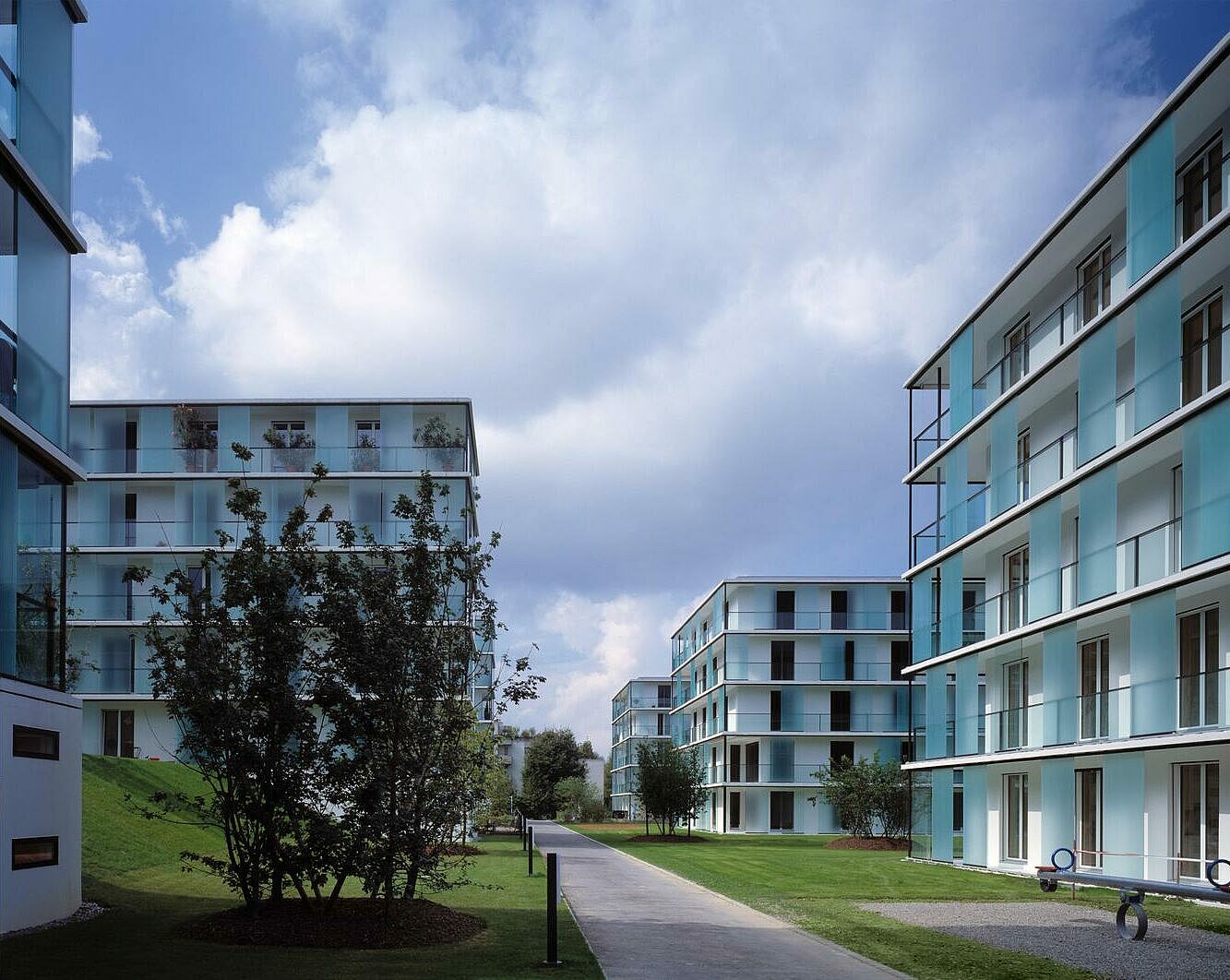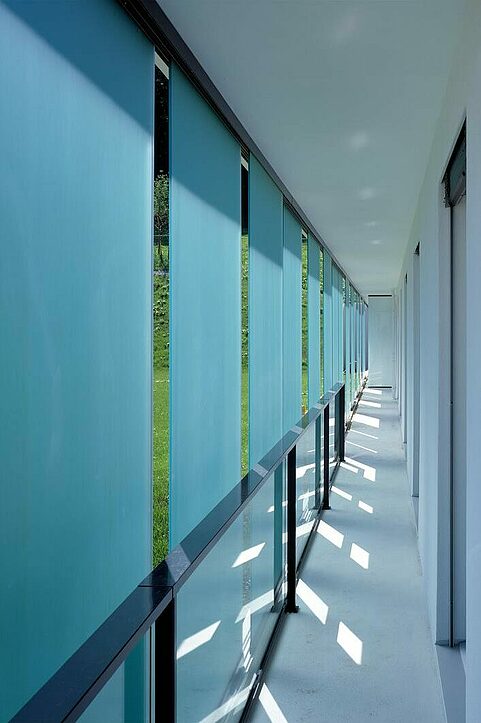More content
Residential

A complicated backstory gives way to clear architectural statement. Baumschlager Eberle Architects were invited to join the Achslengut II project late in the day after a Swiss firm had won the design competition. With the land-use plan already finalised and the linear structure, block depths and building lengths for the first phase of construction already decided, our first task was to modify the land-use plan for the sloping section of the site.
As a result, phase II of the project offers a radically different and significantly more rational planning scheme comprising eight point blocks. These compact structures feature internal access routes and a façade-mounted balcony zone running around each building.
Subtle use of topography, optimum views
The development offers high standards of comfort despite the large number of apartments. The carefully considered layout of the blocks in relation to the site as a whole and their staggered heights guarantee the necessary distance between buildings as well as optimum transparency, exposure to sunlight and views of Lake Constance.
Insights
The advantages of point blocks include a compact, energy-saving building shell – the smaller the exterior surface, the lower the heat loss – and the significant flexibility they allow in terms of floor plan.


Façade-mounted sliding panels of matt glass help to modulate distance and visibility between neighbouring blocks, protect personal privacy and mitigate the obtrusiveness of individual balcony use, providing a simple means of separating public and private spheres. And it is, of course, this second glass skin that makes the architectural design so special. Easy to move, the panels are in constant use by occupants, giving the buildings an ever-changing exterior appearance.
Everything from lofts to five-bedroomed apartments!
Each block is organised around a common stairwell. White marble floors and elegant, sculptural banisters of black steel give these semi-public areas a certain grandeur, transforming them into stylish foyers. Ancillary spaces and wet areas are concentrated in the building core. Other rooms extend along the façades, their tall windows giving onto the balcony zones that run around the buildings. The load-bearing structure is designed to allow bespoke floor plan organisation.